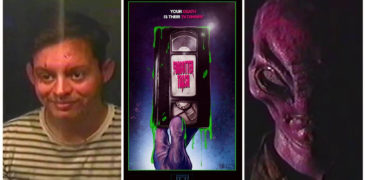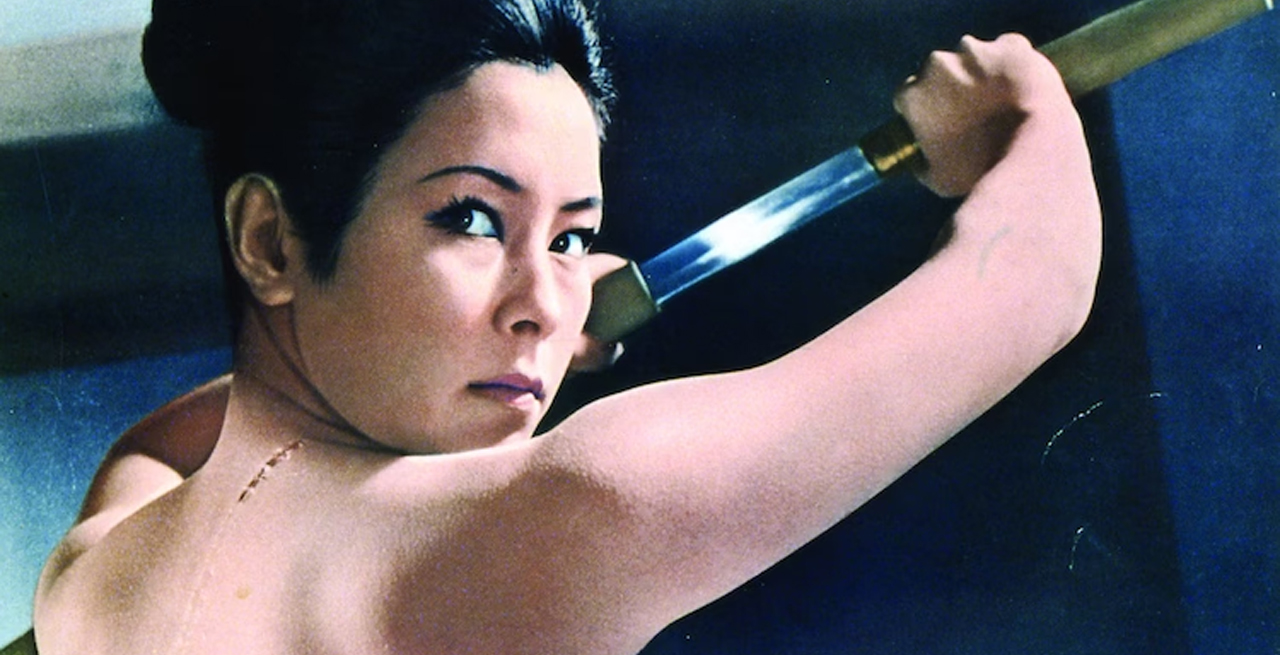
Despite being one of Japan’s biggest film studios throughout the late 40s and 50s during the golden age of Japanese cinema, Daiei were struggling by the mid-60s and had to slash budgets for their productions. This eventually led to a merger with Nikkatsu in 1970, followed by bankruptcy in 1971. Somewhat overlooked is Daiei’s 1968-1969 period where they started to focus on exploitation films and could be considered as their own equivalent to “pinky violence.” This era of exploitation, dubbed by Daiei as their “ero guro/unique historical drama” line, is largely defined by two film series: the Woman’s Secret series and the Kanto Woman series. The Kanto Woman series began in August of 1968 and consisted of four thematically-linked standalone films, with Kanto Woman Infamy being the third of those.
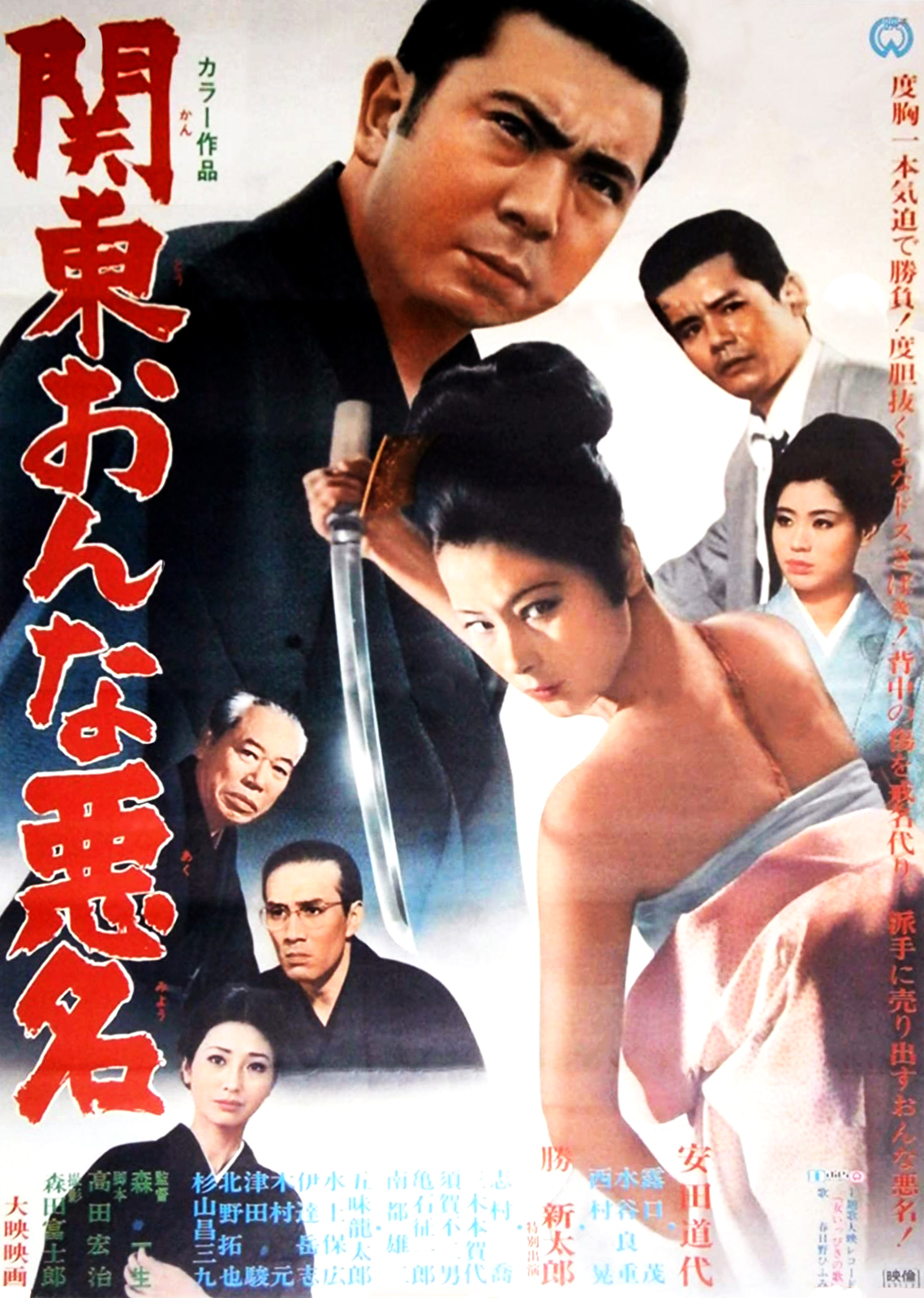
When a woman’s partner is stabbed by street thugs, she entrusts her friend Miki (Michiyo Yasuda) with the care of their infant child. Miki has recently graduated to become the underboss of the Eijima yakuza clan in Kanto and travels with the baby to Osaka. Miki aims to unite the baby with his grandfather, Teppei (Takashi Shimura), who is the head of the Shimada yakuza clan. However, the Shimada clan is in a bitter war against the Senda brothers (Fujio Suga & Seiichiro Kameishi)—two ruthless young members of the rival Kozai-kai clan—and Teppei cannot take in his grandson. Soon the war escalates to the point of the Senda brothers gunning down Teppei in a drive-by shooting, narrowly missing Miki and his grandson, who they then attempt to hunt down.
With Teppei’s passing, his debt to the Kozai-kai clan automatically defaults and they take over control of all the group’s operations (predominantly a construction business). Miki takes it upon herself to revive the remnants of the Shimada clan and tries to work out a deal with the Senda brothers. Whilst they initially appear welcome to talks, as soon as Miki leaves their headquarters after the meeting, they run her down in a car and attempt to shoot her. Miki manages to break free of her captors with help of Aramaki (Shintaro Katsu): an infamous but honourable gangster from Kyushu who is a friend of the Kozai-kai. He is disgusted at the treacherous actions of the Senda brothers and makes it clear that he will stand in their way if they continue to act with such dishonour.
Tensions grow between the Senda brothers and the members of the Shimada clan who are now forced to work under them. Finally, two Shimada members strike out against them, though Miki is quick to be punished: as head of the clan, responsibility for their actions falls upon her. In front of the Kozai-kai boss and the Senda brothers, she must cut off her finger as reprisal, despite Aramaki’s protests. When Miki leaves Osaka briefly to return to Kanto, the Senda brothers see this as their chance to annihilate the Shimada clan once and for all. They launch a savage attack on their headquarters, ransacking the building and end up stabbing one of Miki’s friends as she fights desperately to defend Shimada’s grandson. Miki returns not long after the Senda brothers have left and is incensed by the attack. Realising that there is no honourable way to respond to the Senda brothers, who will always resort to underhanded tactics, she launches a personal attack on their headquarters armed with just a katana and wakizashi.
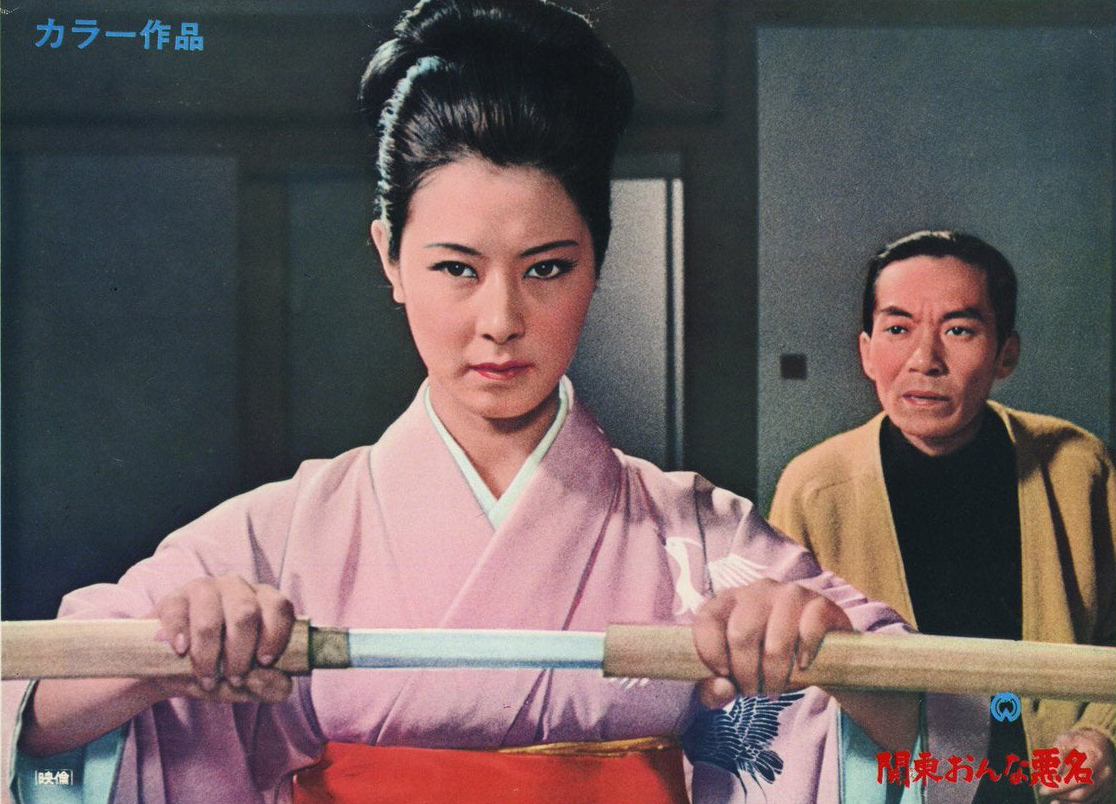
At first glance, Kanto Woman Infamy shares a lot in common with the earlier Kanto Woman Yakuza—unsurprising given that both were written by Koji Takada. Both films deal with traitorous yakuza plots, an examination/criticism of the subject of honour among the yakuza, and of course Michiyo Yasuda’s protagonist trying to survive in a male-dominated underworld. However, it is immediately clear that Kanto Woman Infamy lacks much of what made Kanto Woman Yakuza stand out: its focus on its characters. So much time is dedicated to plotting out the intricacies of the yakuza politics that the titular “Kanto Woman”, Miki, is all but ignored for a large portion of the first half of the film. The initial act, instead of developing the character of Miki, drops the audience into the middle of a yakuza war and has to spend much of its time explaining each yakuza clan and their relationships. The pacing drags as exposition is mainly delivered by men talking in rooms and by the time the focus shifts back to Miki, she already feels out of place in the larger plot.
The ever-reliable Michiyo Yasuda once again carries the film effortlessly. Despite the little characterisation afforded to her, she makes the most of what she is provided and manages to give the character of Miki a surprising amount of depth. Her portrayal is just understated enough that both the yakuza and the audience continually underestimate her; a key facet in driving the plot forward. Her greatest strength is the yakuza’s own refusal to see her as a serious threat, though through the small examples of strength slowly revealed to the audience, by the final act there is no doubt that Miki is a force to be reckoned with. That being said, due to so much focus being put on the yakuza, Miki’s character development can seem quite sudden at times with much of it occurring offscreen.
Arguably the standout performance comes from Fujio Suga as the elder Senda brother. His portrayal is delightfully villainous and he clearly relishes every second of playing such a slimy and dishonest character. His constant condescending cockiness and vicious plotting make him a character you can’t help but love to hate. Director Kazuo Mori capitalises on this making sure that he is always kept in frame in the background—even in scenes where he is not directly involved—continually plotting and scheming away in a cloud of cigarette smoke. Shintaro Katsu, a frequent collaborator of Mori’s, is a welcome addition to the film as he unofficially reprises his role from the long-running Bad Reputation series from earlier in the decade. He is perhaps the only character that the Senda brothers actually fear and his strict adherence to a code of honour further highlights just how extreme the brothers’ actions are. Unfortunately, despite his prominent position on the poster, his presence in the film is fleeting and he makes no appearance in the finale.
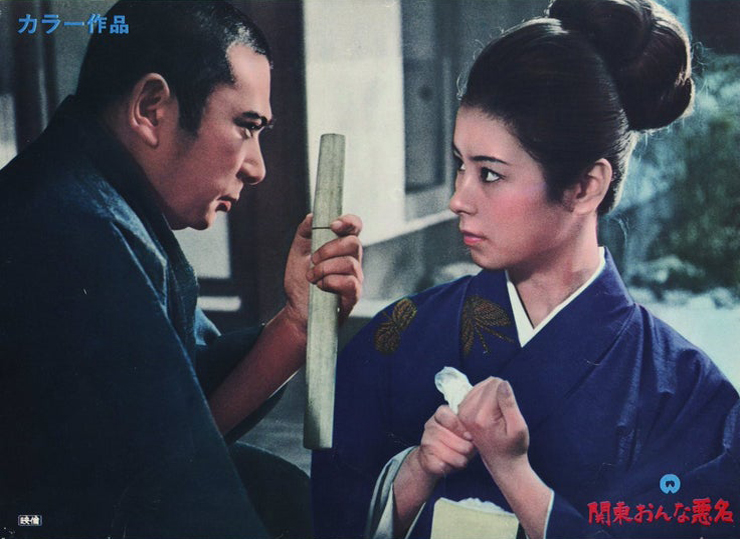
Despite the slow pacing throughout the film, the ending flips things on its head with a bombastically violent finale. Miki’s final attack kicks off with her ram-raiding the Senda brothers’ compound with a dump truck before hacking down everyone in sight with her swords. Kazuo Mori, who had been directing samurai films since the 40s and was a prominent figure in the formation of Daiei’s long-running Zatoichi series, comes alive with his action scenes. Miki’s tightly directed assault is brimming with rage and takes advantage of its cramped office environment, bringing an interesting variation on the more common open space fight scenes usually seen in Japanese films. As the first colour film of Daiei’s ero guro line, Mori also takes advantage of this using colour coding in the final scenes to wordlessly show Miki’s inner emotions—from yellow rage to blue retribution.
Kanto Woman Infamy, through the character of Miki, explores interesting themes of chivalry and male machismo. Following a woman who is thrust into a man’s world, we are afforded a different perspective of the usual yakuza tropes: in a usual yakuza film, the audience, much like Japanese society as a whole, has to accept the yakuza’s often strange customs as a matter of fact. However, in Kanto Woman Infamy the juxtaposition of Miki works to highlight the hypocrisy of so-called yakuza honour and the actions of “businessmen” who, despite their high opinions of themselves, are little more than thugs. The Kozai-kai as a whole demand honour of everyone else, to the point where Miki has to sacrifice her finger, yet they do not abide by the same rules. It is clear that power provides an acceptable alternative to honour, much like the existence of the yakuza in general. Miki’s treatment also highlights the greater expectations put upon women who, despite being treated worse than men, are held to a higher standard.
More Film Reviews
DASHCAM (2022) Film Review – The Rhymes are Fresh, The Bodies Putrid
Rob Savage gave us one of, if not the best, screen-life found-footage horror films to date with Host. Brilliantly presented as a terrifying experience in the duration of a free zoom…
Spookies (1985) Film Review – These Spooks Were Made for Walkin’
Ever since I was a small child, I have had a fascination with monster movies. They bring back nostalgic memories of sitting for hours on end, watching black and white…
Christmas Bloody Christmas (2022) Film Review – An Over the Top Slay Ride of Holiday Fear
Christmas Bloody Christmas is an over-the-top slay ride of holiday cheer fear! Writer and director Joe Begos (VFW, Bliss) always delivers a combination of good storytelling and delirious, gory violence…
Lost Highway (1997) Film Review – One Heavy Trip
A lot has been said in the last week or so about the legend and legacy of David Lynch. The man was a unique visionary who saw the world, time…
Poser (2021) Film Review – The Art of Fitting In
Finding a sense of belonging is built into the core of human existence. In Poser 2021, the debut feature from filmmakers Noah Dixon and Ori Segev, we delve deep into…
Forgotten Trash (2019) Film Review – Modern SOV Horror
When one thinks of Shot on Video (SOV) horror, a definitive time period tends to pop into the mind. That period from the 80s to the late 90s when SOV…

Hi, I have a borderline obsession with Japanese showa-era culture with much of my free time spent either consuming or researching said culture. Apparently I’m now writing about it as well to share all the useless knowledge I have acquired after countless hours surfing the web and peeling through books and magazines.




